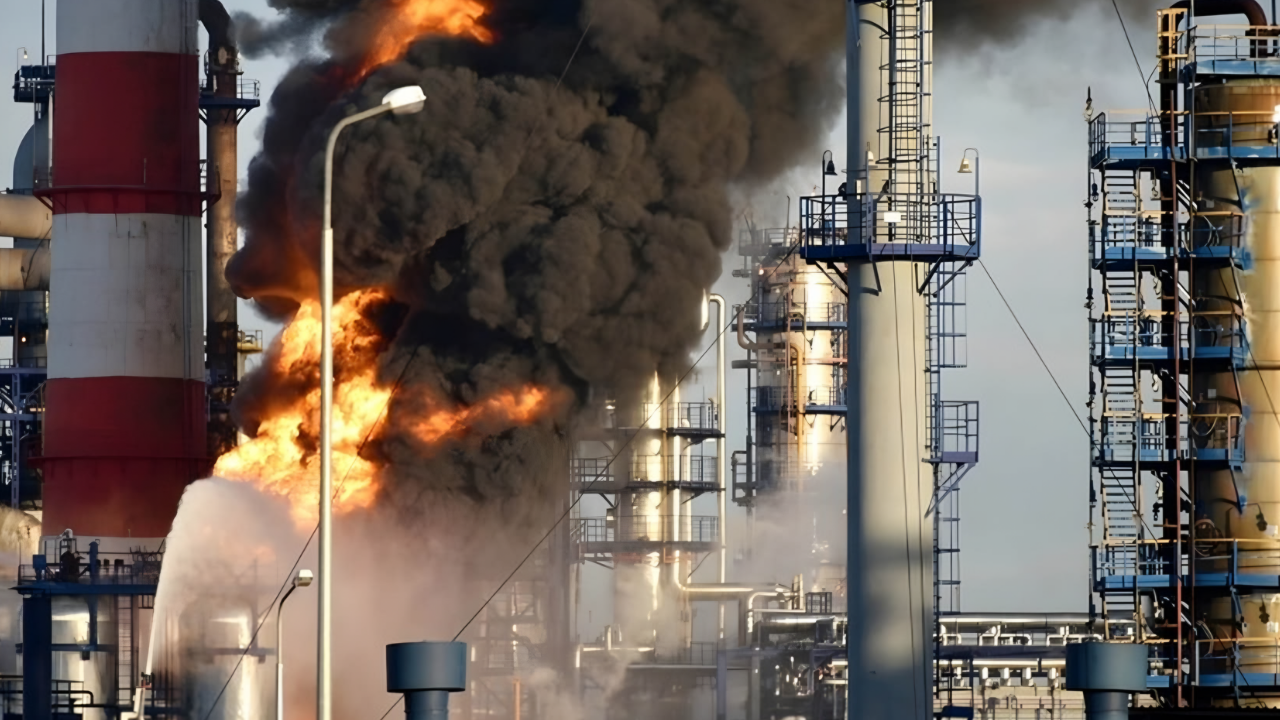
Ukraine’s recent drone strike on a major Russian oil refinery shows how much the war has changed and how far Ukrainian technology has come. The refinery, hit almost 900 kilometers from the border, could handle about 176,000 barrels of oil a day, so damaging it is a serious blow to Russia’s industry and war effort. The attack lit large fires, hurt key equipment, and revealed that Russian air defenses are not as secure as they appear, especially against fast, long‑range drones.
Modern Drone Technology in the Conflict

The fighting between Ukraine and Russia is no longer just tanks, artillery, and front-line troops; drones now play a central role on both sides. Ukraine has moved from simple propeller drones to jet-powered models that can fly faster, farther, and carry heavier explosives deep into Russian territory.
Some Ukrainian drones, guided by satellite navigation and supported by artificial intelligence, can fly hundreds of miles, allowing them to hit targets that were once thought safe far behind the front. Ukraine has managed this by mixing local engineering talent with reused and improvised parts, building a large and flexible drone fleet that can still punch through strong air defenses.
Hitting Russia’s Fuel Network

Russia’s oil refineries are vital to its war machine because they turn crude oil into diesel, gasoline, jet fuel, and other products that keep military vehicles, aircraft, and civilian infrastructure running. When a refinery capable of processing 176,000 barrels a day is damaged, it suddenly removes millions of gallons of fuel from Russia’s supply, which can limit the movement of tanks, trucks, helicopters, and jets, and also affect ordinary people through shortages and higher prices.
Lost refining capacity also forces Russia to sell more crude instead of higher‑value fuel products, cutting its income at a time when foreign money is especially important to support long and costly fighting. Repeated Ukrainian strikes on energy sites have temporarily shut down parts of Russia’s refining system, and some assessments suggest a noticeable share of total capacity has been affected, which can influence global fuel markets and raise prices worldwide.
Tactics, Weak Defenses, and Global Effects

The refinery attack used multiple drones flying at night from different directions, which made it hard for Russian defenses to detect and stop them all. By attacking storage tanks and processing units at the same time, the drones caused big explosions and fires that were visible from far away, even though Russian officials initially claimed most drones had been shot down and damage was limited.
Independent images and reports later showed serious destruction, underlining a growing gap between official statements and what observers on the ground and from satellites can actually see. Strategically, Ukraine’s focus on energy sites aims to cut the fuel that powers Russian forces and to shake public faith in Moscow’s ability to protect important infrastructure, while also sending a message to the world that relatively cheap, smart drones can threaten even heavily defended countries.
A Preview of Future Warfare

Military experts and governments are studying Ukraine’s drone operations as a preview of how future wars may look, with swarms of low‑cost drones challenging expensive air defenses. Ukraine’s use of long‑range drones, smart navigation, and mass attacks shows that agility and innovation can partly offset disadvantages in size and resources, changing the balance between offense and defense.
At the same time, hitting fuel and industrial sites deep inside a country blurs the line between military and civilian targets, because damage can lead to fuel rationing, higher living costs, safety risks, and fear among people far from the front. These deep strikes suggest that future conflicts will likely involve more unmanned systems, more focus on critical infrastructure, and more pressure on societies as well as armies, making the human and economic costs spread well beyond the battlefield.